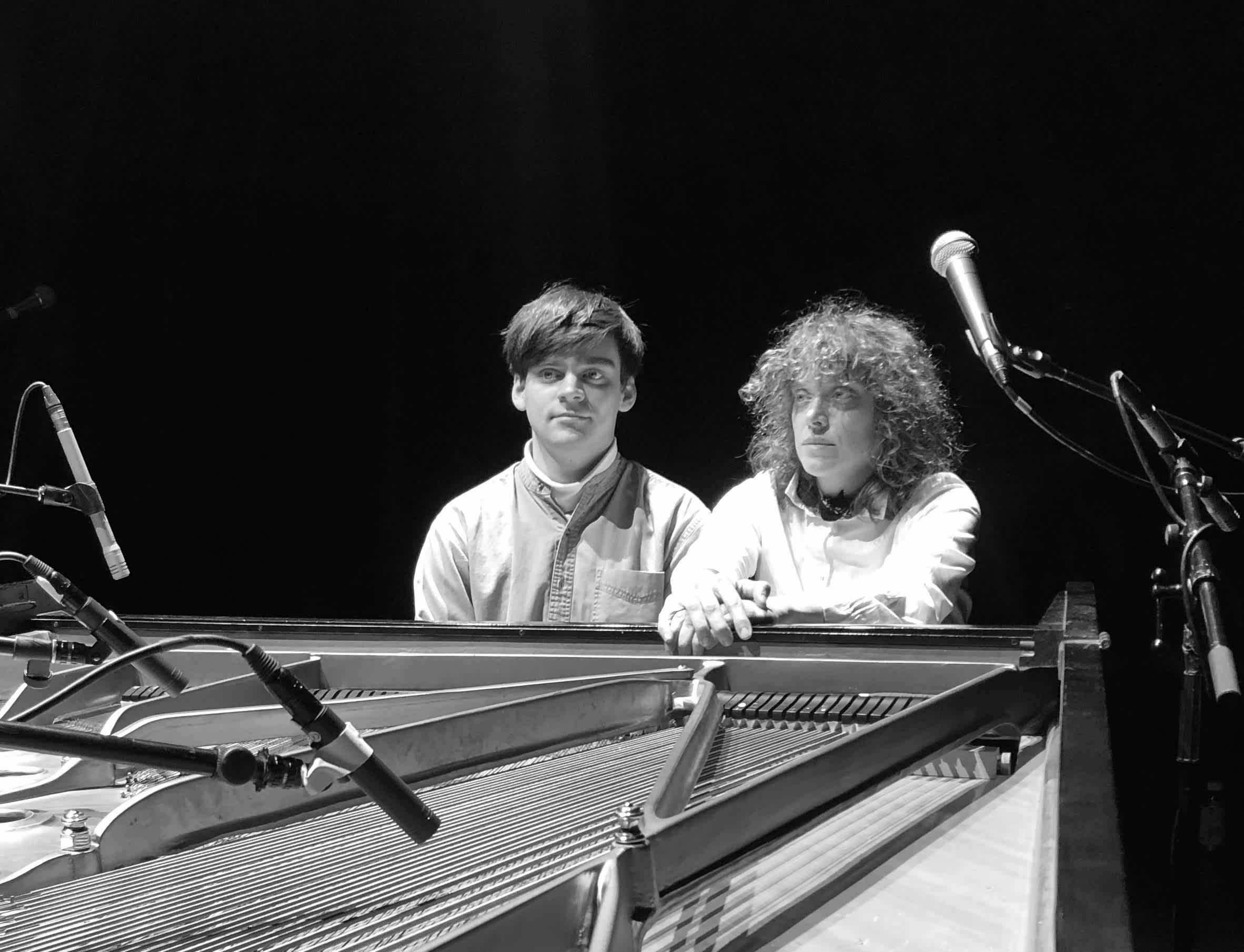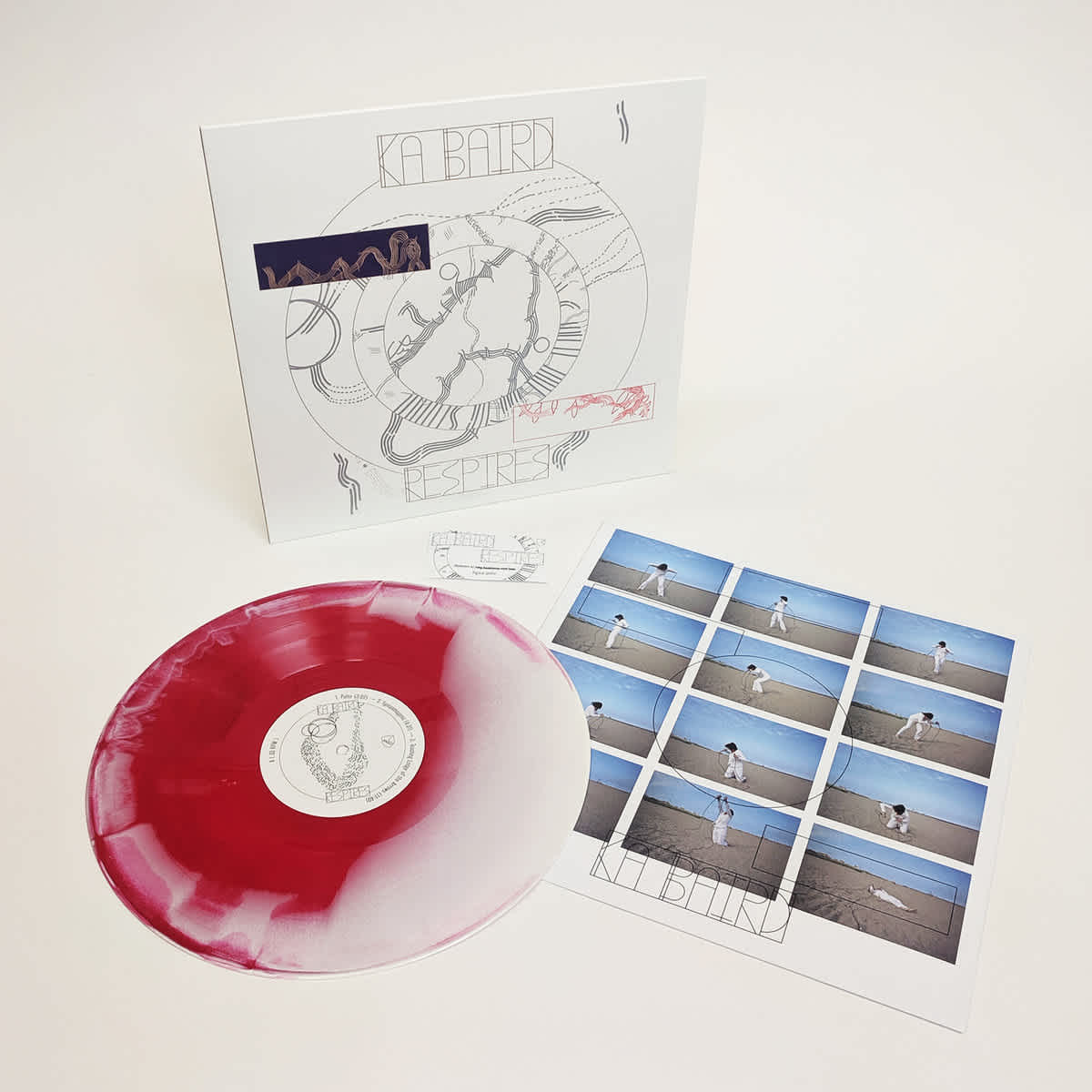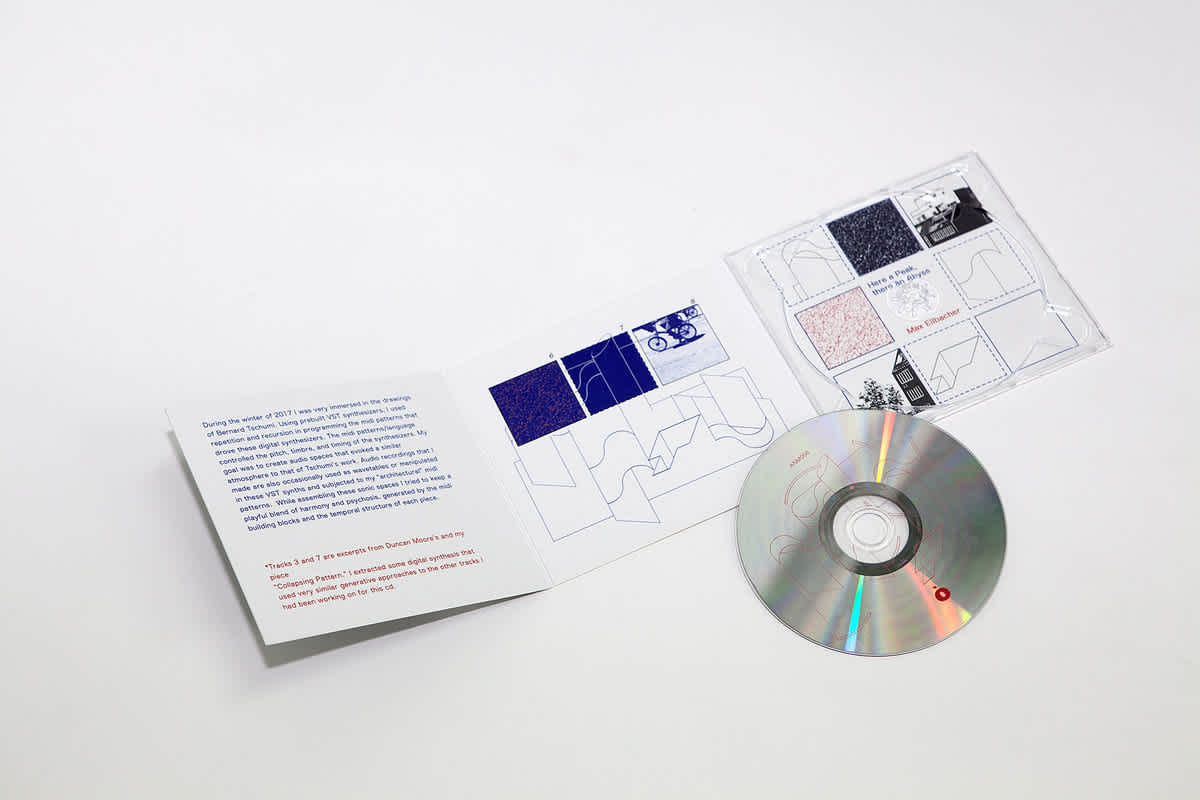
Credits:
Keenan Saiz, Winter/Spring 2020 Curatorial Intern
April 27, 2020
Ka Baird and Max Eilbacher—two innovative and celebrated musicians, producers, and performers—are teaming up in an exciting collaboration for The Kitchen titled Vivification Exercises. Each of their extensive bodies of work balances playful experimentation with a sense of deep introspection that invites listeners into a world both engaging and disorienting. With years of experience in multiple bands and collaborative projects behind them, the two artists are now working together to interweave elements of perception, embodiment, exaggeration, and humor into an aural and visual play on the depths and limits of human awareness. By merging computer-intensive electronic spatialization with physical performance, Baird and Eilbacher construct a demanding experience that questions the relationships between sound, space, and audience.
While originally scheduled for April, Vivification Exercises has been postponed in response to the COVID-19 pandemic. In the interim, Baird will perform as part of the Kitchen Broadcast livestream series on April 28. In advance of these performances, Spring 2020 Curatorial Intern Keenan Saiz spoke with Baird and Eilbacher about the concept behind Vivification Exercises and the processes they have been developing in preparation.
You both have been working toward the project Vivification Exercises, which was originally scheduled to take place at The Kitchen in April. How did you meet and what about this initial meeting fostered collaboration?
Ka Baird [KB]: I met Max through his band Horse Lords but became familiar with his solo work, and I was incredibly interested in how he worked with sound, noise, and multiple speakers. I reached out to him, asking him if he would be interested in adding to a track called “Oneiric” for a record I was putting together in 2017, Sapropelic Pycnic. That continued into this really organic exchange between the two of us where we started to pass tracks back and forth. We built this long-distance collaboration that’s been going on for three years or so. When I was invited to do something at The Kitchen, Max was one of the first people I thought of because there is a completion in our collaboration that I find very exciting.
Max Eilbacher [ME]: Yes, in our relationship while working on tracks, it’s always been very intuitive, with the same headspace and similar feelings about how sound should work and function. That’s why we continue to collaborate. When Ka first offered me this opportunity to collaborate at The Kitchen, we started talking on the phone and exchanging drawings and concepts. Then we spent just under two weeks of residency time in The Kitchen’s theater space developing a pretty good structure.
Could you share a bit about how this collaboration changed from an exchange across distance to a process of establishing a presence within a physical space?
KB: The Kitchen’s first-floor theater, as a sonic space, is like a womb, and the piece itself is spatially focused in terms of distribution of sound. There is a lot of experimentation that cannot be done virtually because recordings are just stereo, and we want this to be a complete sensory experience within the walls of The Kitchen. The piece will of course entail a lot of physical movement and call-and-response that cannot be explored virtually. As well as learning how to live process sounds as we go.
ME: Working physically with Ka, who has a lot of movement and energy, allows the sound to carry itself in different ways. When we are working from our separate studios, there’s not a lot of embodiment. The Kitchen’s space, as its own element, has become part of the piece, and it lends itself to adding another dimension to the sound. It’s more free, and comes from a different angle as opposed to just being sound.
KB: It’s a true-blue collaboration. Max is the wizard behind the curtain while I am visible and exposed. But we both are creating content, feeding off signals we pass back and forth.
Could you describe the concept of Vivification Exercises? What does “vivification” mean to you both, and in what ways will this idea be translated through the performance?
KB: One could just look at it as a sonic psychic workout session. It reaches its serotonin highs followed by its moments of exhaustion. It is a further extension of work that I’ve been focusing on in the last few years⎯a type of very physically engaged, hyper-now performance that comes through a sense of being impelled by a force rather than directing it.
Also this idea of vivification, to give life to or to animate, is also in reference to the instrument we are using/manipulating, in this case The Kitchen’s Steinway piano. We are creating a visual and aural dissection of it, mic-ing it profusely, using it more as the resonating/percussive chamber it is, and thereby giving it new life by redefining the approach.
From Henri Lefebvre’s Rhythmanalysis: “Everywhere there is interaction between a place, a time, and an expenditure of energy, there is a rhythm.” That rhythm can be different types of rhythms, like the relations between internal body rhythms and external rhythms of the environment. We play with all throughout the piece.
ME: Perception is something we are also playing with heavily. There’s a lot of tuning of frequencies to the space, and making the space rattle, and then making the piano interact with certain resonant frequencies of the room by finding where the space and sound meet. Through the use of multiple speakers and a six-channel synthesizer, a lot of the electronics are based on partials and overtones from the piano. The piece plays with the distinction between whether the room or the speaker is rumbling, or whether the piano overtone is being heard from the actual piano rumbling in the room or from the synthesizer moving the sound around.
KB: The piece questions the relationship between sound and source. With my physical presence interacting with the space, there is also this disembodied information coming through the speakers. It might be unclear if that source material is from the piano or not from the piano, or if it was captured live two seconds ago or it was actually something pre-recorded.
This questioning of the relationship between sound and source also indicates a strong emphasis on activating the listener’s awareness, establishing a different kind of engagement between the audience and the performance. What kinds of awareness do you imagine building with the audience?
KB: It could be so many things; that’s very personal for each audience member. I try to create an environment where there is some kind of result, whether through disorientation or extremely active engagement.
ME: I feel that’s where our practices cross over. I am very much interested in confusion, change of perspective, and how audio can produce those reactions in the audience. The separation between the sound and how people experience sound is very defined in the classic paradigm of the relationship between a performer and an audience: the performer sits there between two stereo speakers, and the audience listens.
In this piece, people will sit in positions between the six speakers, with Ka in the middle. Therefore, it’s no longer a classic, conscious space. You are no longer experiencing this hysteria of signal from left and right. Instead, it’s all around you, creating a different type of environment. The audience should definitely expect to be disoriented by emotional content and stimulus input.
KB: I am also very much attuned to the fact that there is humor in our performance. It’s a little disorienting in terms of how someone should feel, but I am incredibly interested in riding that line between some kind of ritual and total absurdity. I know I am absurd. I take it very seriously.
Let’s now dive into your solo work, and how your individual practices have contributed to this collaboration. Ka, on your website you mention your work culminating in a type of “body music,” with a focus on physical exertion and “psychic extension.” This direction was especially pronounced in your most recent album, Respires, released in 2019. Could you describe the process of developing a more performative approach to sound?
KB: Over the last few years I’ve gained an absolute joy of performing: it’s my favorite thing to do in the world. It’s where I am the most alive. My work is very much about how I can be hyper-present in the moment, something I call “hyper-nowness.” It’s an exploration, specifically, of energy.
The embodied approach has been emphasized more in the past four or five years in that the source of whatever sound I make has a very strong relationship with how I move my body. My approach became a kind of sonic choreography. Now it has evolved into various microphone techniques and motions, creating these very vigorous containers where I interrogate with intensity and humor that spot between control and powerlessness.
ME: That’s an interesting correlation between this piece and my work, where everything is about changes, and there is a kind of expression within those changes.
Max, you come from a computer intensive background, and your latest release in March 2020, Here a Peak, There an Abyss, experiments across a wide spectrum of noise and composition. Could you share a little about your own process?
ME: My work has drastically changed over the years, but I do mostly work in a computer where I try to program a pretty straightforward rhythm pattern that I have in my head by routing that pattern through another instrument and then back into the computer. I like to experiment with filtering different sounds, which can be very open-ended. It’s about sculpting sound in space.
For this collaboration I have recorded lots of samples from the piano, from rolling marbles on it to yelling into it to plucking notes. I’m all about warping and modulating and pulling apart and gluing sound back together in weird ways.


It will be very exciting to see how this all comes together at The Kitchen. Since the idea of experimentation with the perception of sound and space is very central to this project, I am curious what kinds of inspirations you both pull from in your own personal artistic development as well as the collaborative process leading up to Vivification Exercises. More specifically, are there any artists from The Kitchen’s own history that have informed your work?
ME: When I’m working on a specific musical project, I try to listen to material that’s not similar. For me, it’s more about everything in between, from watching movies and reading books to listening to music. I’m always cycling through stuff. In my own approach to sonic sculpting, I draw a lot of inspiration from “Guero” by German avant-garde composer Helmut Lachenmann. In terms of The Kitchen, I am very inspired by the work of Robert Ashley and the early performances of Maryanne Amacher, in which she works with diffusing sounds and using different speaker systems.
KB: There are some inspirations or elements for me from certain early Fluxus pieces that were performed at The Kitchen. Also, Max sent me a link early in the process to a text about Ashley’s 1974 performance at The Kitchen, Your Move I Think, which discusses exaggeration and whether that exaggeration reads as ridiculous or transcendent (or both). In terms of voice work, I am inspired by Yoko Ono and Joan La Barbara, and, in terms of focus, I am influenced by Elaine Radigue and Amacher. Of course, the lineage with Arthur Russell and his connection with The Kitchen in the early days is deep.
I really have a great respect for the variety of things The Kitchen presents, whether that is dance, theatre, or music. It’s quite an honor to perform there.